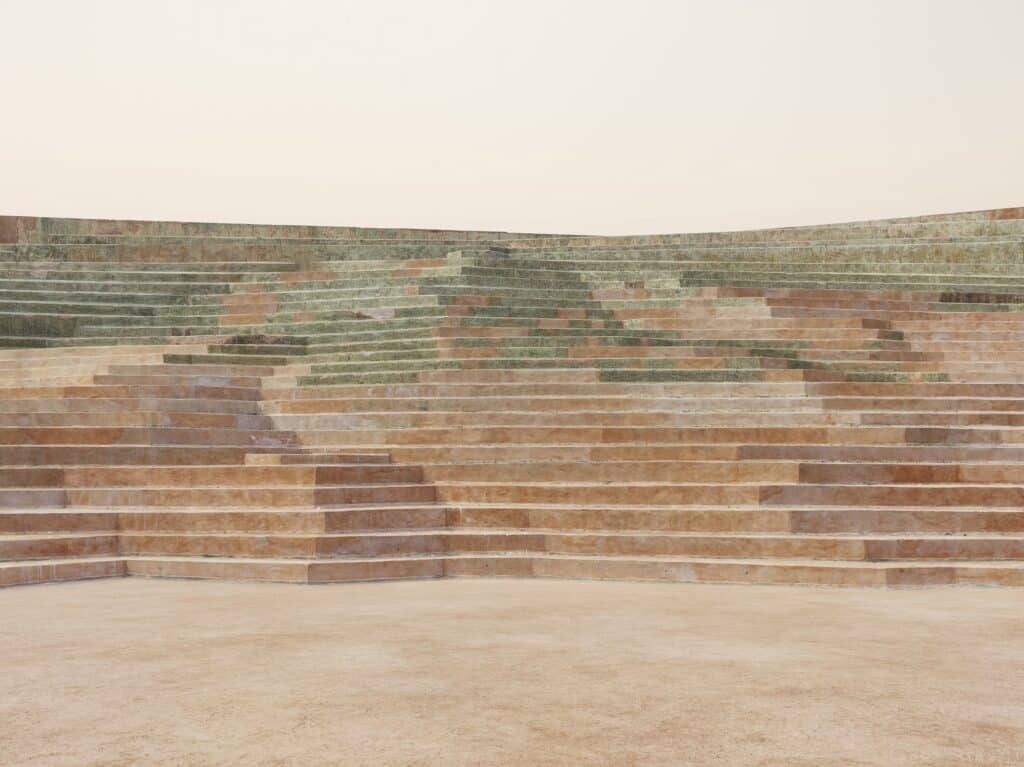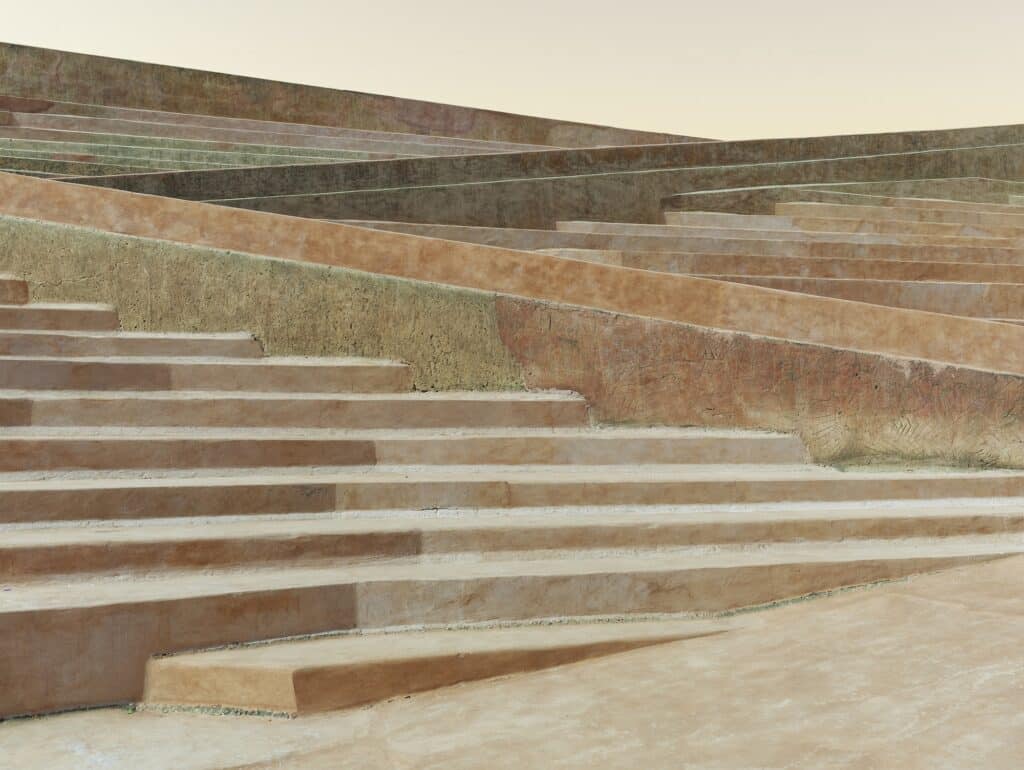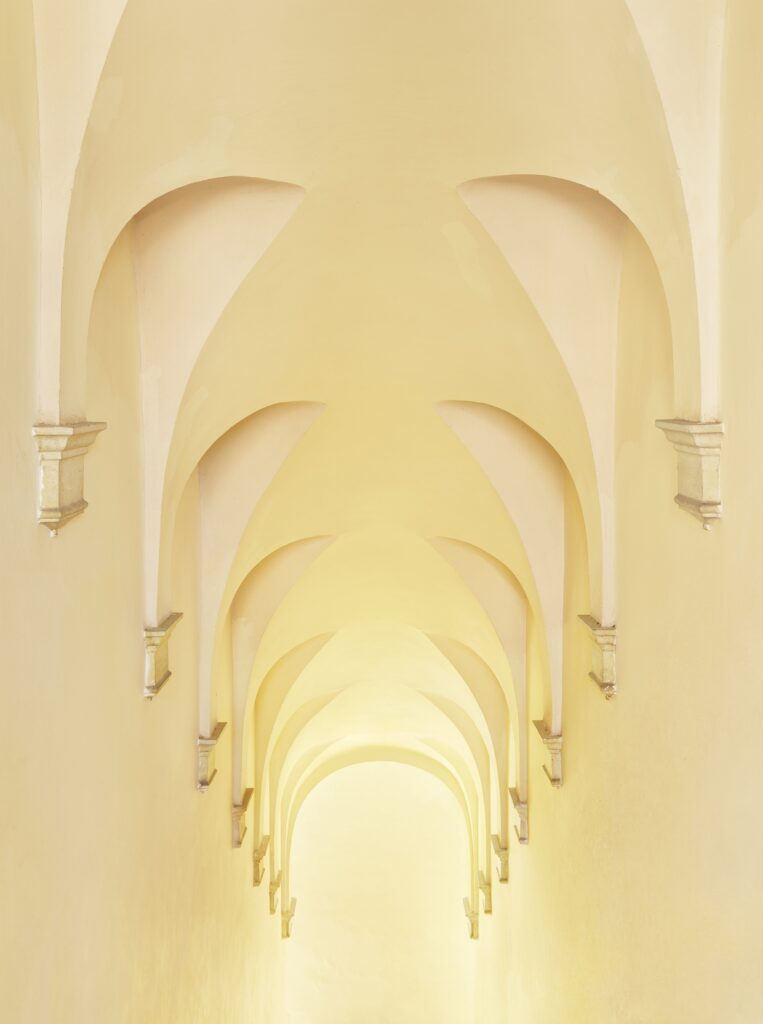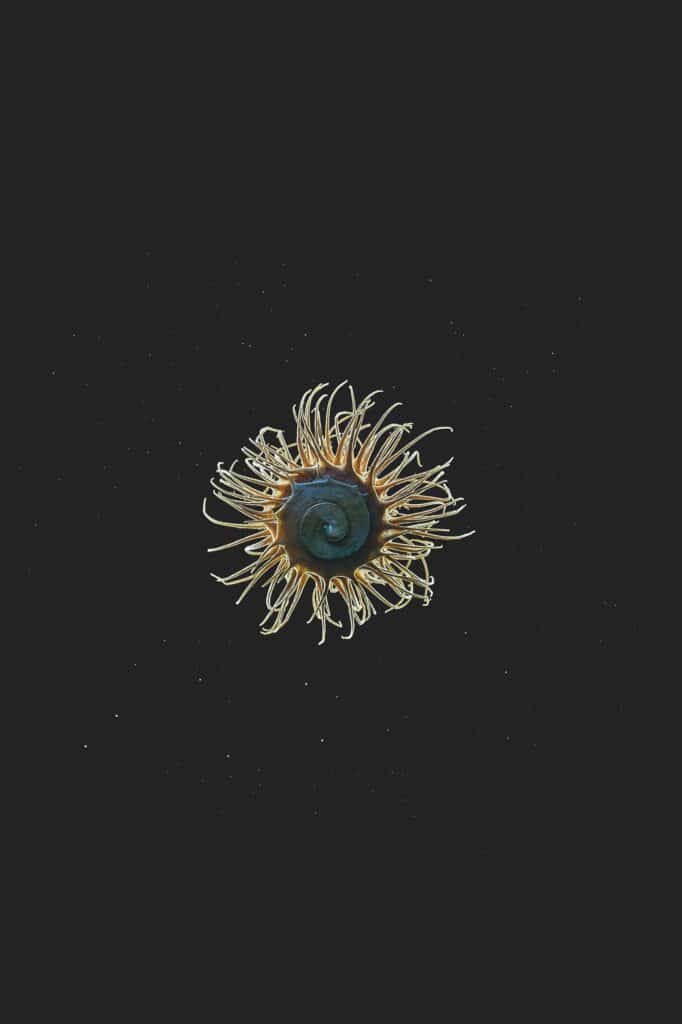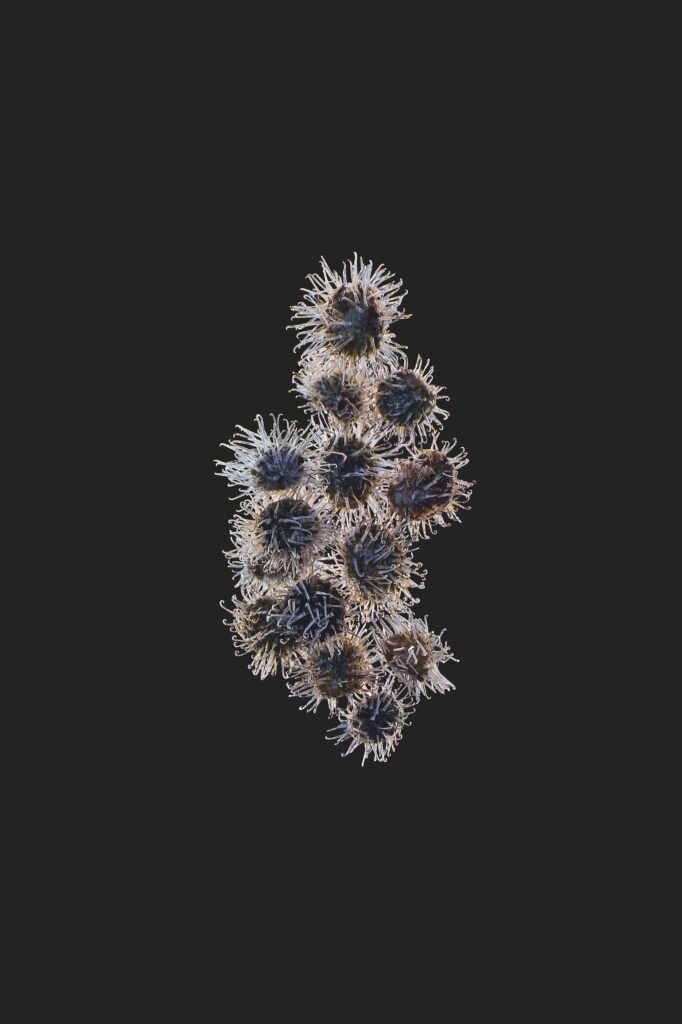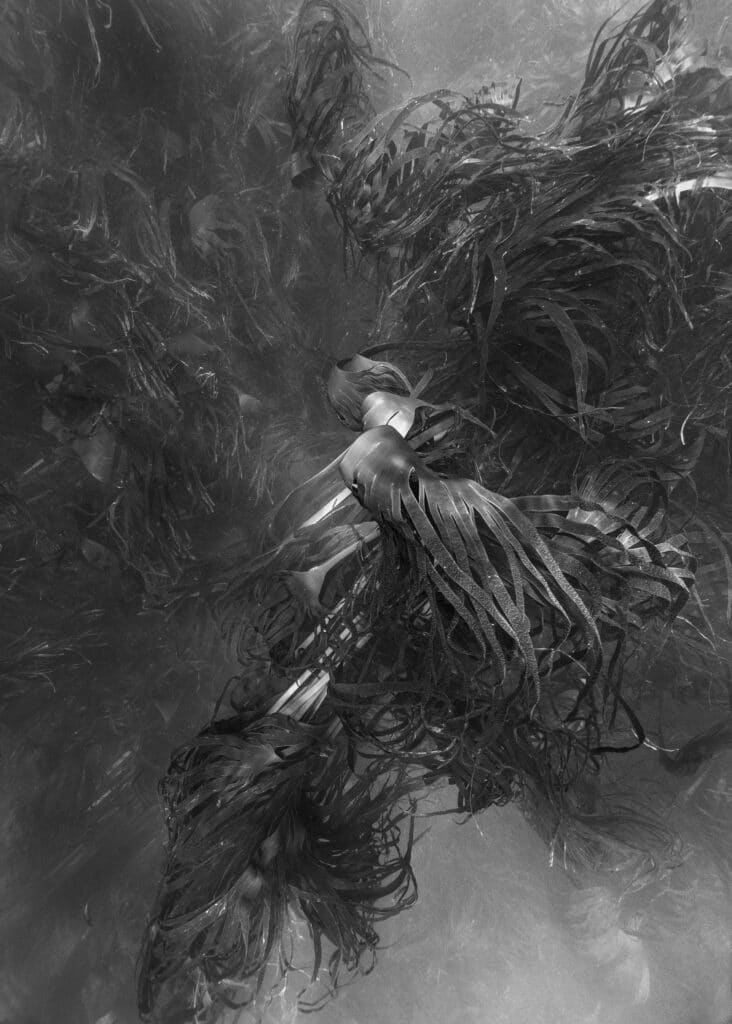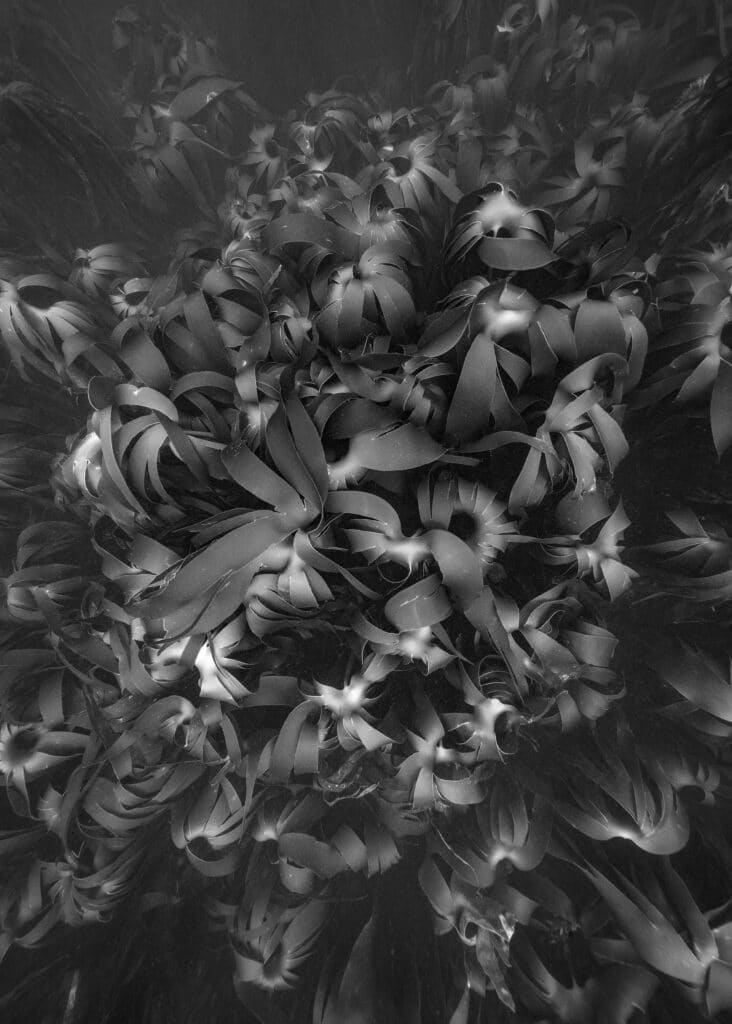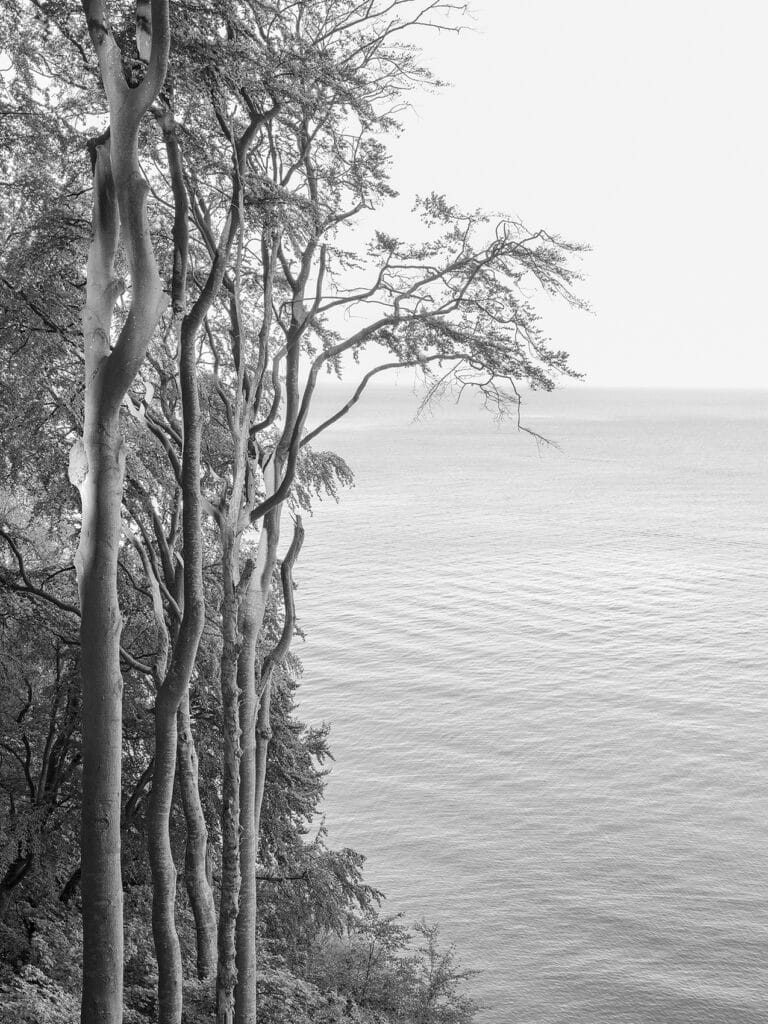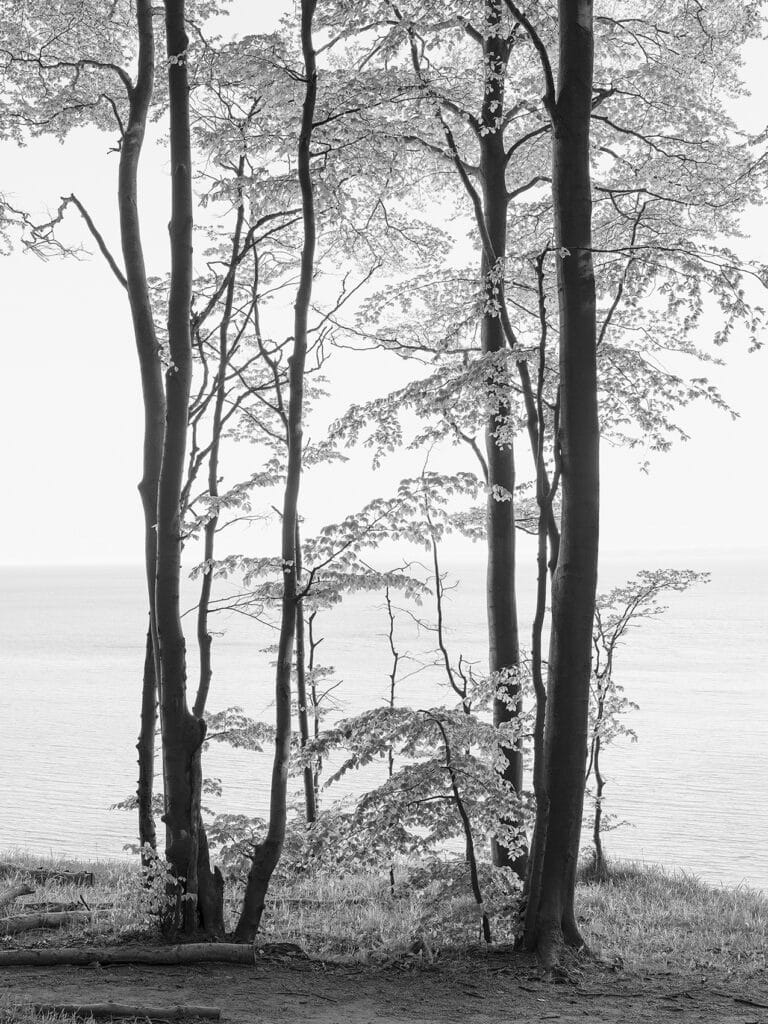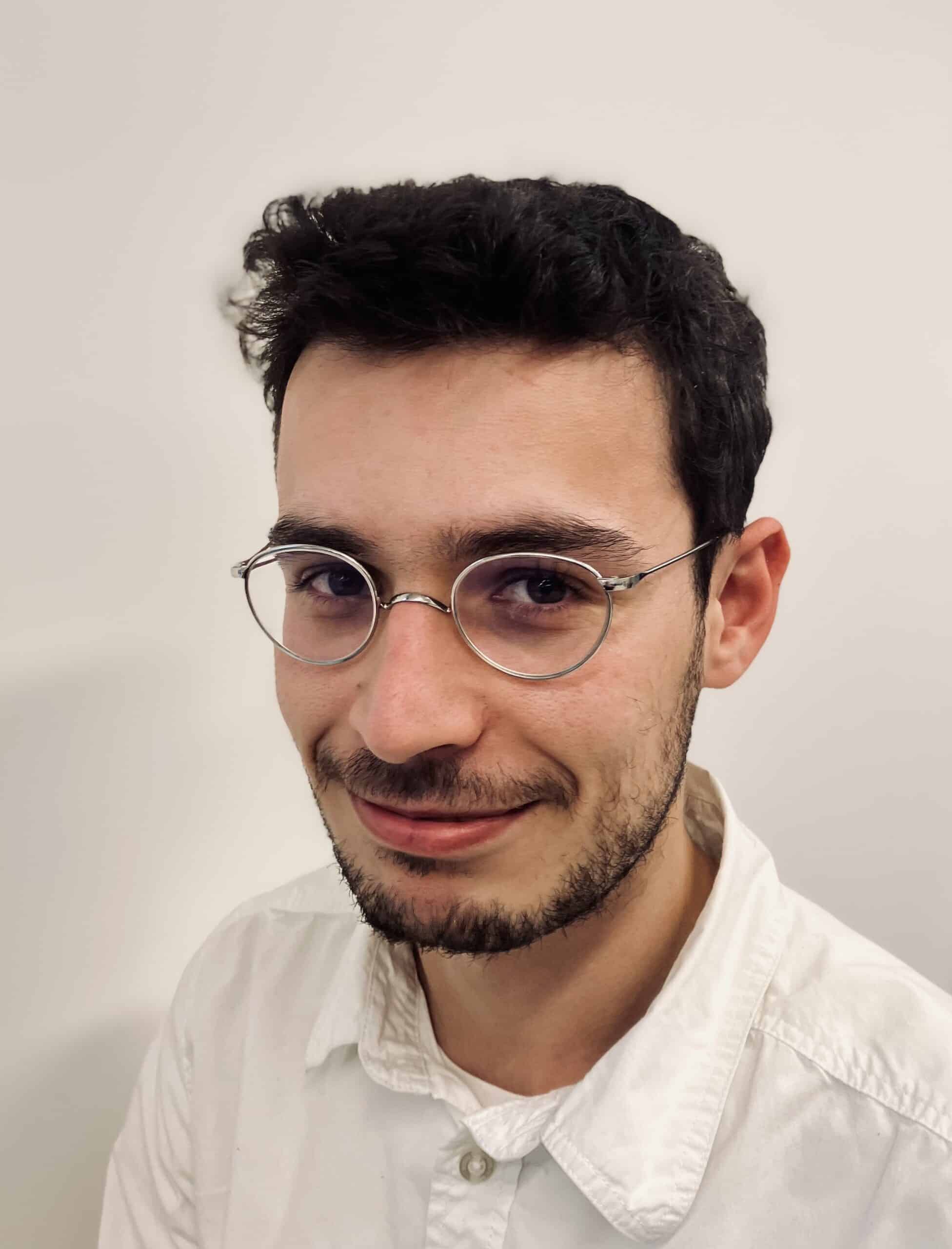Gazing skyward, she watches a leaf detach from its branch and, slowly, float, whirl, and zigzag, tossed about by the wind, before it finally rests on the ground. Loredana Nemes, who has captured the leaf’s journey, looks up beaming.
She is one of the six photographers featured in this 6th edition of the photography festival on the Chaumont-Photo-sur-Loire estate. Overlooking the Loire River, the château’s inner courtyard is accessed via an old wooden drawbridge spanning the moat. A small door, hidden behind an external corridor flanked by Roman columns, takes us to the first exhibition hall via a wide spiral staircase.
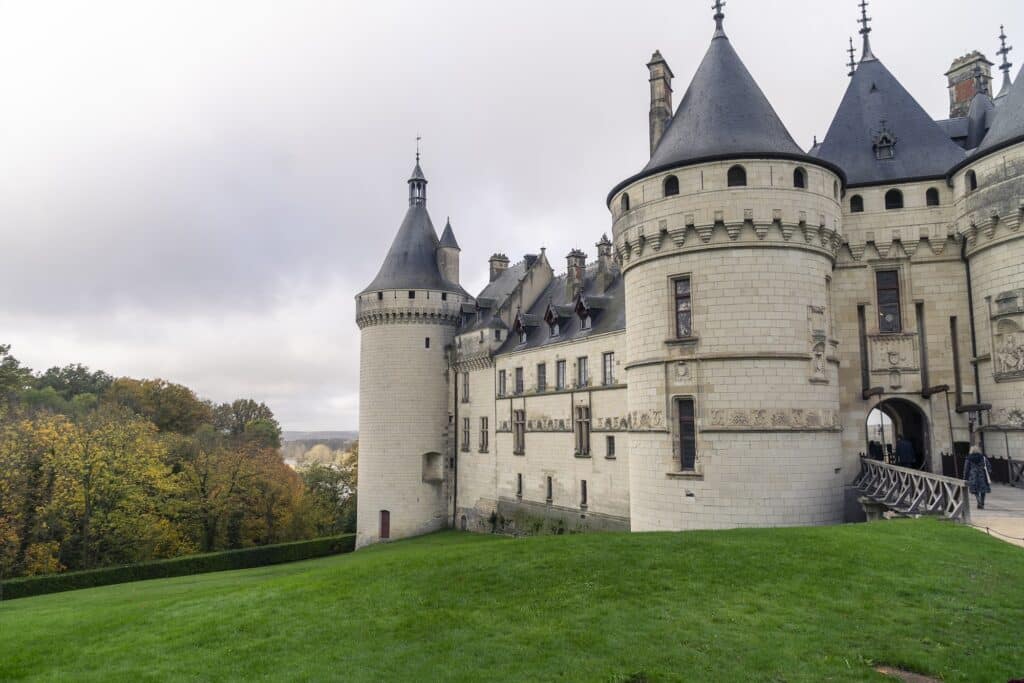
Timeless visions
Eric Poitevin’s photography, alternating between small and large formats, B&W and color, transitions from wide shots of the underbrush near his home to closeups of plants some might dismiss as weeds. Just as he plays with the spaces between trees, this Meurthe-en-Moselle native uses the exhibition space and layout to enhance his photography.
His underbrush landscapes, printed and displayed in oversized formats, create an immersive experience. The white walls of the château fade away, giving way to a tangle of trees, fallen branches, and ground-level plants in shades of green, ochre, and brown. These visions stand outside of time and transport us to the forests of the artist’s childhood.
To contrast with the cluttered underbrush, the artist creates portraits of grasses and low-lying plants against a white backdrop. These beautiful elements, often overlooked by nature lovers and hikers, are captured in Poitevin’s faithful, sensitive, and timeless representations.
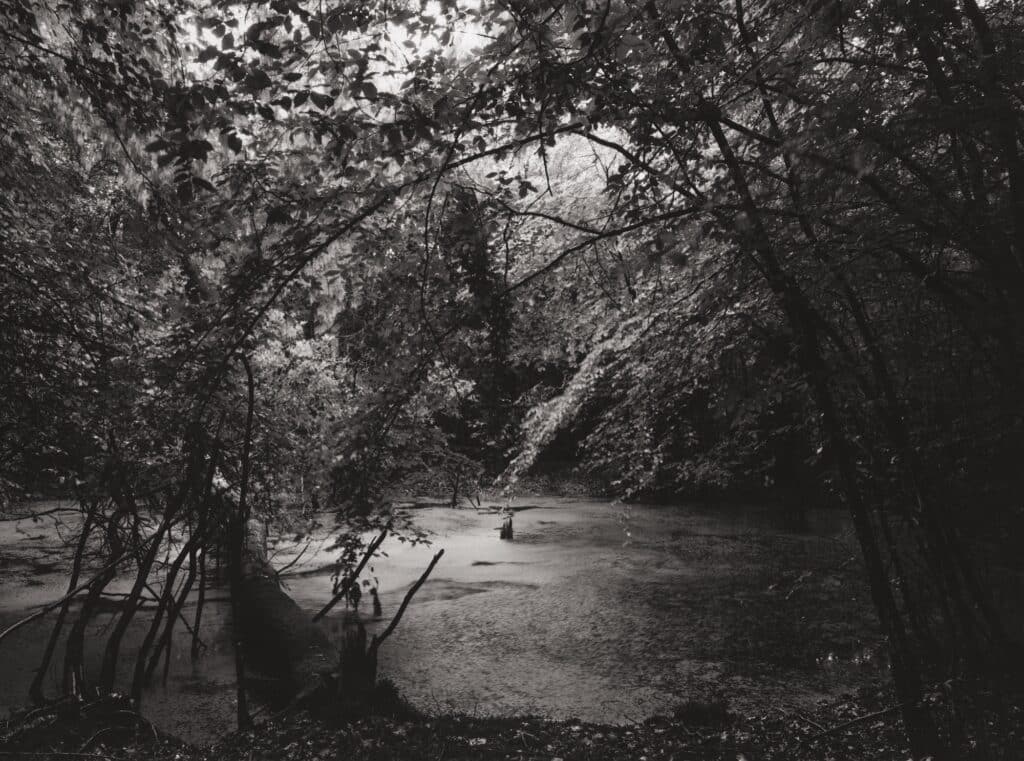
Ljubodrag Andric’s photographs also transcend temporality. Eschewing foliage and shrubs, he focuses on mineral landscapes. The texture of the walls of the princess’s bedroom resonates with the walls of the structures in India portrayed in the large-format images on display. These abandoned buildings, remnants of a forgotten past, are a testimony to the artist’s quest for “intimacy in monumentality.”
Losing any sense of time, the artist spends hours waiting for the right light to add depth to his subjects: “The light gets better with pollution which makes it more diffuse,” he explains, adding that he must “kill the light to better recreate it.”
Straddling photography and painting, Andric’s rocky landscapes leave behind nature and vegetation to focus on human landscapes, all straight lines and crumbling walls. These compositions, unaltered in editing and processing, prevent the eye from “straying outside the frame, away from what we are looking at.”
The nature of science
Since all things in nature must start somewhere, Thierry Ardouin is fascinated by seeds. His project was inspired by the discovery of a catalog classifying seeds into “legal” and “illegal,” with 95% being hybrid seeds (resulting from the crossbreeding of two distinct seeds), followed by the discovery of an informal network for selling “illegal” seeds. Motivated by these findings, Ardouin embarked on creating a photographic catalog of seeds from around the world.
Since 2009, these portraits have revealed “the beauty of seeds, their shapes and colors.” Ardouin also describes their “usefulness,” which often depends on their morphology. Working with Gilles Clément, who theorized the concept of planetary garden in 1992, Ardouin has given an encyclopedic dimension to his project.
Nicolas Floc’h, on the other hand, documents the underwater forests along the Brittany coast: “For many photographers, this is an non-subject. Underwater photography,” Floc’h explains, “typically features animals, athletes, or sunken relics. Vegetation is rarely depicted.” The artist is drawing up a survey of marine landscapes and compiling a typology of algae along the French coast.
Setting aside color, which he considers incidental, Floc’h focuses on black-and-white photography, believing it aligns more closely with reality. “With depth, colors blend together and become uniform, turning into shades of blue and green depending on the sea.” By staying “at the edge of the forest,” he offers a natural documentation of these landscapes through a wide-angle lens.
In a series titled Initium Maris, the artist exclusively captures the coasts of Brittany, revealing what lies below our line of sight. This project is all the more vital in the face of pollution and climate change, which threaten the existence of these aquatic forests as much as they endanger tropical sea corals.
Natural poetry
On the ground floor of the château, between the former dining room and an antique-styled salon, are displayed the photographs of Korean artist Bae Bien-U. His art reflects a major concern of the Korean people: living in harmony with nature. Avoiding any traces of human activity, he focuses on landscapes framed by sky and mountains, with clouds and fields dovetailing into one another in the distant mist.
“These pines made me feel the sacredness of life, but in a different way than the gentle curves of the Korean pines in Gyeongju. Firmly rooted in the ground, like parasols, they possess a unique charm: a rugged, resilient feel. As the sun set, the sea transformed, and the pines embroidered the sky… I could never get bored photographic this landscape: each day was more thrilling than the last,” explains the artist in his book Et les pins brodaient le ciel [And the Pines Embroidered the Sky], published in January 2018 by Arnaud Bizalion.
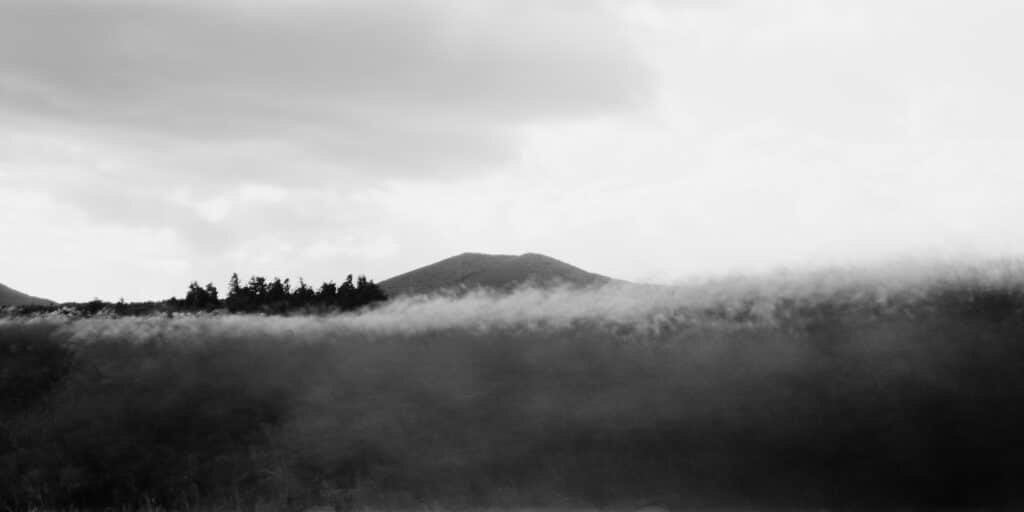
The exhibition concludes in a small, stone outbuilding, which showcases Loredana Nemes’s black-and-white oeuvre. Conceived as a tribute “to the cycle of life” (the life and death of trees, seasons, etc.), the series Graubaum und Himmelmeer [Gray Trees and Celestial Sea] “exists only thanks to the silence of winter, the rustling of spring, the brilliance of summer, and the colors of autumn.”
As a child, Nemes fled her native Romania with her parents for Germany. It was there, on the island of Rügen (the country’s largest), that she encountered a forest that sparked a fascination. Several return visits were needed for her to understand the source of her love for this island: “the beech trees of Rügen are exactly the same as those of my childhood, when I played outdoors with my friends.”
The series encapsulates her love for nature, vegetation, and landscapes. It’s a passion Nemes shares with the other photographers of this edition of Chaumont-Photo-sur-Loire, which becomes evident when a withered, shriveled leaf, reddened by autumn, detaches from its branch to her utter delight.
Chaumont-Photo-sur-Loire, November 18 to February 24, 2024

